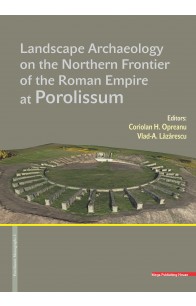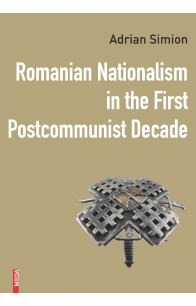Rezultate căutare pentru 'Adrian Ursu��iu'
„Ce second supplément des Inscriptiones Daciae Romanae représente, tout comme le premier, une préparation à la publication des fascicules du quatrième volume des IDR, contenant les inscriptions de Dacie Porolissensis. Il comprend la grande majorité des estampilles sur briques et tuiles du Musée National d’Histoire de Transylvanie de Cluj-Napoca. Malheureusement, pour des raisons techniques, nous n’avons pas eu accès aux pièces prêtées en 1971 au Musée National d’Histoire de Roumanie de Bucarest, lors de la constitution de celui-ci1. Au fil de plusieurs années Mme Viorica Rusu Bolindeț avait apporté dans le dépôt du musée des dizaines de tuiles estampillées du prétoire du consulaire d’Apulum, mais on n’a pas pu agréer aucune solution afin de citer son manuscrit. Du point de vue scientifique la perte n’est pas grande, car il s’agit de types bien connus, publiés dans IDR III/6. En revanche, nous remercions chaleureusement Mme Adriana Isac pour nous avoir permis d’utiliser toutes les pièces provenant du camp de Gilău, dont certaines inédites. Au début de 1997 des tuiles estampillées représentatives ont été envoyées au musée de Zalău en vue d’une exposition illustrant la vie militaire dans le nord de Dacie. Elles n’ont plus été restituées. Afin d’éviter des problèmes administratifs, on les a inclues dans le premier supplément, qui contient les inscriptions sur les briques et les tuiles du musée de Zalău. Le présent volume ne représente pas moins un catalogue du musée de Cluj.” (Prooemium)
„The frontiers of the Roman Empire, over 5000 km long, stretch from the Atlantic coast of Scotland, along the Rhine and the Danube, also enclose the Banat region and Transylvania, then going down along the Oriental Carpathians to the Black Sea; from the southern coast of the Black Sea they continue towards the Near East until the Red Sea; then, in North Africa, they line the edge of the Sahara desert until the Atlantic coast of Morocco. Over this entire area, visible traces of fortifications, roads and settlements are still preserved, but numerous monuments still lay hidden underneath the earth. Despite the fact that the Roman frontiers crossed regions with different relief and climate, they constitute a whole in that they were designed to protect Roman territories. The research of these monuments and the preservation policy regarding them was and is unequal in the various presentday states on whose territory traces of the Roman frontier are to be found. Consequently, in the ‘80s of the 20th century, the idea of globally protecting the Roman frontiers, viewed as a unitary monument, was met. In 1987, Hadrian’s Wall in United Kingdom was declared a UNESCO monument. It was followed in 2005 by the German-Raetian sector, on which occasion the UNESCO committee decided to set up the ‘Frontiers of the Roman Empire’ site. (...)
This project through its complexity generated an interdisciplinary approach of the proposed subject stimulating such future attempts in the archaeological research field. By using the latest technical methods of non-destructive investigation the project did not damage the stratigraphy of the archaeological site obtaining instead a high amount of data otherwise time consuming judging from the archaeological excavations perspective contributing also to the preservation of the cultural heritage.” - Introduction
Link -> http://www.z-studarch.ro/
CONTENTS
Octavian Cristian Rogozea
Discoveries Attributed to the Early Vinča Phase in Tărtăria “Gura Luncii” (Alba County). The 214 Preventive Archaeological Researches Performed on “Site 10B”
Georgeta El Susi
Animal Bones from the Neolithic (Szakalhat) Levels at Uivar (Timiş County)
Victor Sava, Florin Mărginean, Adrian Ursuţiu
The Eneolithic Cemetery in Pecica “Est” (Arad County)
Tünde Horváth
Budakalasz, ein besonderer Bestattungsplatz der Badener Kultur. Kritische Anmerkungen zum Buch: Maria Bondar – Pal Raczky (Red.): The Copper Age cemetery of Budakalasz
Tobias L. Kienlin, Klára P. Fischl, Liviu Marta
Exploring Divergent Trajectories in Bronze Age Landscapes: Tell Settlement in the Hungarian Borsod Plain and the Romanian Ier Valley
Călin Ghemiș
The Late Bronze Age Gold Ring Discovered in Betfia (Bihor County, Romania)
Liliana Daniela Mateescu-Suciu
Glass Recipients from Sarmizegetusa Regia. Unguentaria and Bottles
Horațiu Cociș
The Rural Landscape of the Frontier of Dacia Porolissensis. A Case Study: the Northern Sector –
territorium Arcoba(da)rense – The Valley of River Someșul Mare
Norbert Kapcsos
Sarmatian graves from Pecica Site 18. Remarks upon the phenomenon of „isolated” graves from the Cris-Tisa-Mures region
Ioan Stanciu
On Early Medieval Roasting Trays and their Presence in the Settlements from the North-Western Part of Romania
Călin Cosma, Adrian Bolog, Ovidiu Oargă
Avar Graves Recently Discovered in Gambaș (Alba County) on the Spot Called “Ogoarele de jos”
Dan Băcueț-Crișan, Gruia Fazecaș, Doru Marta
An Early Medieval Feature Discovered in Oradea – Salca “Ghețărie” (Petrom Gas Station)
Daniela Tănase, Gábor Bertók, Anita Kocsis, Balázs Major
The location of Egres Cistercian monastery – Igriş (Timiș County), in the light of recent geophysical research
Florin Mărginean, Zsolt Csók, Keve László, Victor Sava
Unveiling History. Archaeological Excavations in the Fortress of Ineu (Arad County)
Dorel Micle, Bogdan Alin Craiovan, Andrei Stavilă, Octavian-Cristian Rogozea
The Times before Fischer’s Furniture Store. The Preventive Archaeological Researches in Sfântul Gheorghe Square 2–3, Timișoara (Timiş County)
Andrea Demjén, Florin Gogâltan
The Ciuc-Ghimeș Quarantine (18th–19th Centuries). Archaeological Researches of the Former Customs Point “Cetatea Rakoczy”
Abbreviations
Romanian nationalism has been and it still is a research topic that has generated and still generates various controversies, both at the level of the opinions of the authors who have dealt with this subject, and at the level of the interpretations that the reader can have on such a topic. And the analysis of the evolution of Romanian nationalism since 1989 is a theme that can be included in this framework of different, and sometimes even contradictory, approaches. Moreover, any analysis of post-communist Romanian nationalism may have its limitations, in terms of the authors’ approaches, and because, in general, approaches to nationalism have a certain potential for inaccuracy. The nationalist phenomenon is very complex because it refers to the people (the nation) and the country and quite often the boundary between nationalism and patriotism, for example, is quite weak. And in the Romanian case, things were even more complicated, both because the nationalism responded to a need for homogeneity existing in the post-communist Romanian society, and because the Romanian nationalism had a specific and quite complex typology.
In this paper, we referred more to those aspects that looked at the presence of nationalism in areas such as society, culture, religion or interethnic relations. Moreover, the period chosen for the study was rather a delicate one, considering the fact that the last decade of the twentieth century was, for Romania, a period of search of the road that the country needed to straighten, after half a century of totalitarian regime. And studying nationalism in such a historical context may have different interpretations, especially since post-communist Romanian nationalism, as some Romanian authors have stated, could be considered as paradigmatic for nationalism in general, because of its subtlety and complexity. (from the „Introduction”)






